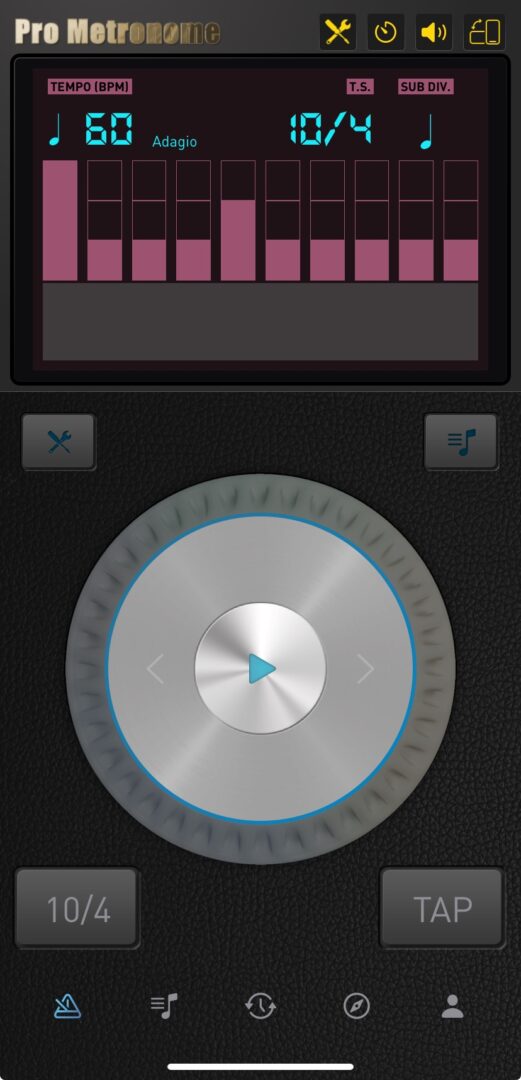
Breath control is life control
When I was diagnosed with ADHD I learned there’s solid scientific evidence that controlled breathing techniques can improve focus, help regulate emotions, and reduce stress. While these are all factors that are particularly relevant for managing ADHD, the knowledge is ancient and has benefited the human family for centuries.
4:6 — the golden ratio of breath control
With diaphragm engaged, Inhale for 4 seconds, exhale for 6, through your nose. You will take 10 breaths each minute. Butterflies disintegrate. Anxiety melts away. If you practice several times a day, in about 3 weeks it will become easy.
This is not new!
The integration of biofeedback into ADHD management is, in many ways, a scientific rediscovery of wisdom that has guided monks, yogis, and meditators for millennia. What is new is our ability to measure and fine-tune these techniques with modern tools, offering personalized, data-driven approaches to cultivating focus and self-regulation. For musicians like me, this has a direct impact not only on mental clarity but also on technical precision, fluidity, and expressive depth in performance.
Both modern science and ancient traditions converge on the idea that a longer exhale is beneficial for calming the nervous system, improving attention, and reducing stress. Given that ADHD is often associated with heightened sympathetic activity (fight-or-flight response), techniques that prolong exhalation—such as the 4-second inhale, 6-second exhale pattern I practice—can help restore balance and enhance focus, impulse control, and emotional regulation.
Practices such as pranayama in yoga, zen meditation (zazen), and breath-focused Vipassana all emphasize deliberate control of respiration to calm the mind and enhance awareness. Modern neurofeedback and biofeedback systems mirror the traditional emphasis on deep breathing as a gateway to mental clarity and self-mastery.
Practices that cultivate slow, rhythmic breathing—whether through Buddhism-inspired meditation, yogic breath work, or contemporary HRV (heart rate variability) biofeedback—appear to share a common mechanism: regulation of the autonomic nervous system.
By slowing the breath to around six cycles per minute (a frequency also seen in traditional contemplative practices), these methods increase parasympathetic activity (rest-and-digest response) while reducing excessive arousal in the sympathetic nervous system (fight-or-flight response). This balance fosters greater cognitive control, emotional stability, and resilience—all of which are valuable for musicians striving for peak performance.
A practical way for musicians (and everyone else who wants to try 4:6)
The image above shows Pro Metronome app with settings for 4:6 regulated breath control. Tempo 60, time signature 10/4, subdivision quarter notes. There’s a strong accent set on Beat 1, and a lesser accent on Beat 5.
Why This Works
1. Rhythmic Entraining of the Nervous System
- Using 60 BPM aligns your breathing with a precise, predictable timing, reinforcing autonomic regulation (which ADHD brains often struggle with).
- The 10/4 meter creates a natural musical flow, making it easier to internalize.
2. Motor-Sensory Integration
- Pairing breath with instrument practice strengthens neuromuscular coordination.
- This links timing, attention, and body awareness, making the breathing habit feel automatic.
3. Cognitive & Learning Benefits
- Since tempo perception and working memory are tied to dopamine (which ADHD brains often lack), this method reinforces rhythmic precision, helping with focus and musical accuracy.
- Practising with controlled breathing also helps in phrasing and relaxation, especially for pieces that require precise breath control (for wind instruments, singing, or even string bowing).
Helping Non-Musicians
For non-musicians, a metronome app like Pro Metronome or Soundbrenner can be set to:
- 60 BPM, accent on beats 1 & 5 (for the inhale/exhale structure).
- Used during walking, stretching, or typing to create a subconscious rhythmic breathing pattern.
- Integrated with other rhythmic activities like drumming, clapping, or even pacing during work.
Applied to practice
In most parts of the world today, most of the music most of us hear is in 4/4. I do the 10/4 metronome practice to achieve 4:6 breathing before and after I practice scales, songs, studies and pieces. My goal is to keep breathing, and maintain the relaxation—and serene guitar faces—that brings me. I’m wary of holding my breath while I’m playing. When I make mistakes and become distracted I often notice I’m holding my breath. I believe these techniques could be applied later I may have great benefit, but I believe for the time being, I will stick to my 4;6 ratio during general daily activities, and try not to hold my breath while I’m practising or performing music. But there are good reasons reasons I might try other patterns and techniques in the future.
Other ratios
Box breathing or four-square breathing, is a structured breathing technique that promotes relaxation and focus. It involves four equal phases:
- Inhale for a count of four
- Hold the breath for a count of four
- Exhale for a count of four
- Hold the breath again for a count of four
This technique is used in mindfulness meditation and stress management, and it has been adopted by groups like the U.S. Navy SEALs to improve focus under pressure.
While box breathing follows a strict symmetrical pattern, other breathing techniques, such as 4-7-8 breathing (inhale for 4 seconds, hold for 7, exhale for 8), emphasize a longer exhalation to stimulate the parasympathetic nervous system. A 2023 study found that just five minutes of breathwork daily, including methods like box breathing, led to greater improvements in mood and physiological stress responses compared to mindfulness meditation alone. Other research suggests benefits such as reduced blood pressure, improved attention, and decreased symptoms of anxiety and depression.
Conclusion
Scientific studies suggest that controlled breathing techniques, including box breathing, can lower stress, improve mood, and even enhance cognitive function. All of the above can only enhance musicianship. Since beginning this practice I notice it takes me less time to memorize pieces and passages. My anxiety levels when playing or recording, and stage fright in general, have decreased profoundly. This is something that has helped me achieve much more than simply remembering where I put my wallet!
§
